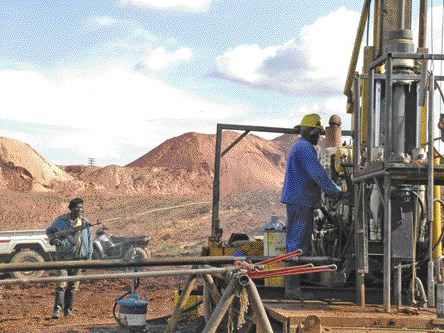Vancouver — There may be a new mine on the horizon for the Democratic Republic of the Congo (DRC), as a feasibility study gave a green light to Moto Goldmines’ (MGL-T, MTOGF-O) Moto gold project.
The mine would process 4.5 million tonnes annually for 8.5 years to produce a total of 3.9 million oz. gold from a reserve of 37.8 million tonnes grading 3.2 grams gold per tonne. The project would produce 400,000 oz. gold each year at an average operating cash cost of US$294 per oz. produced. Project economics were calculated using a gold price of US$600 per oz.
Capital and infrastructure costs come in at US$483 million. That includes a US$78-million mining fleet, US$47 million as contingency funding for construction, and a US$80-million hydroelectric power station that would provide 86% of the project’s annual power requirements. Installed diesel generators would supplement the hydroelectric power supply during the dry season.
Initial capital costs could be recovered in 4.5 years; the payback period falls to three years using a gold price of US$750 per oz.
The study was based on the project’s measured and indicated resources, which total 77.8 million tonnes grading 2.8 grams gold. Not included were the inferred resources, which add 98.9 million tonnes at 3.8 grams gold.
The project, located in the northeastern DRC, would encompass no fewer than six open pits feeding one mill. Moto is developing a mining plan that includes high-grade underground mining as well as expansion of the planned open pits.
Metallurgical test work showed a basic flow sheet, incorporating primary crushing and semi-autogenous grinding (SAG) so that 80% of the material is at 106 microns, followed by a carbon-in-leach (CIL) circuit, yields the best recovery for oxide ores. Transition and fresh ores will use the same circuit followed by flotation; the concentrate would be reground and leached in a dedicated CIL circuit.
The project is a joint venture; Moto’s wholly owned subsidiary Border Energy holds 60%, state-run L’Office des Mines d’Or de Kilo-Moto holds 30%, and the remaining 10% is held by Belgian company Orgaman.
Moto spent more than US$5 million over the last 15 months on work associated with the feasibility study. It also spent more than US$13 million on a drilling program consisting of over 600 holes totalling 75,000 metres.
Moto’s share price fell 30, or 10%, on the news, closing at $2.76. The company has a 52-week trading range of $2.30-7.97 with 62.9 million shares issued.


Be the first to comment on "Positive feasibility for Moto gold project"